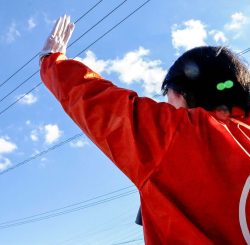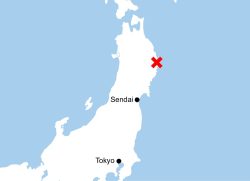Disapproval of Tsuruga Nuclear Reactor’s Restart: Active Fault, Distrust Prevent Resumption of Operations
15:43 JST, July 27, 2024
For the first time, the nuclear regulator will likely disapprove the restart of a reactor at a nuclear power plant whose operator aims for its resumption. This is a serious decision that will force the reactor to be decommissioned, and the impact on Japan’s energy policy cannot be avoided.
The screening team of the Nuclear Regulation Authority, which has been conducting a safety screening on the No. 2 reactor at Tsuruga nuclear power plant operated by the Japan Atomic Power Company (JAPC) in Fukui Prefecture, has concluded that the reactor will not be allowed to resume operations. The reactor has been shut down since the 2011 Great East Japan Earthquake.
The existence of a fault called the K Fault was confirmed early on within the nuclear power plant’s premises. The question has been whether this fault is an active fault that could cause an earthquake in the future, and whether it extends directly under the reactor.
The NRA stated that “the possibility cannot be ruled out” on these points.
New regulatory standards established after the 2011 earthquake state that a nuclear reactor will not be allowed to operate when an active fault is located directly under the reactor. It can be said that the NRA made its decision by strictly applying this rule.
Nearly nine years have already passed since the JAPC applied for a safety screening in 2015. The JAPC and the NRA cannot avoid criticism that they appear to have wasted time over formal issues, such as incomplete documentation, rather than substantial discussions over the evaluation of the fault.
In 2019, numerous errors were found in the materials submitted by the JAPC. In addition, in 2020, it came to light that the JAPC had rewritten materials for the drilling survey without the NRA’s permission, leading to a suspension of the screening process. It was only since September last year that discussions over the active fault had begun again in earnest.
The decision by the NRA not to allow the reactor to resume its operations may have been largely influenced also by a sense of distrust toward the JAPC for its repeated mishandling of the situation.
Going against the NRA’s probable decision, the JAPC intends to continue conducting additional investigations, reapply for a safety screening and correct documents. The focus will be on whether the JAPC will be able to collect convincing new data.
On the other hand, the NRA is negative about further continuation of the screening from a standpoint of seeking high levels of safety. It is said that, as the underground structure of the Tsuruga plant is complex, it is difficult to completely prove that there are no active faults.
The NRA and the JAPC need to continue their dialogue to reach a scientific conclusion that is acceptable to both sides.
Twenty-four nuclear reactors have already been decommissioned, and 27 units have undergone safety screenings. Of the reactors that have been screened, the restart of 17 has been approved, and of those, 12 have already resumed operations. The remaining five have also been preparing to resume operations through such efforts as working on safety measures. The screenings of 10 reactors, including one at Hokuriku Electric Power Co.’s Shika nuclear power plant, are still ongoing.
Obtaining a clear outlook on the number of operational nuclear reactors is a matter that affects the foundation of Japan’s energy policy. The screening should be hastened while giving consideration to safety.
(From The Yomiuri Shimbun, July 27, 2024)
"Editorial & Columns" POPULAR ARTICLE
-

Artificial Intelligence Expands Possibilities for Foreign Language Learners
-

Build Intellectual, Physical Strength, As Well As Communicative Power / Japan Should Move from Beneficiary to Shaper of World Order
-

Global Economy in Turmoil: Prevent Free Trade System from Going Adrift / Risks to Financial Markets Must Be Heeded
-

Japan-China Strain Set to Persist as Beijing Officials Self-Interestedly Bash Tokyo; Takaichi Unlikely to Back Down
-

French and German Ambassadors to Japan Call for Democracies to Unite in Defense against Russian Disinformation
JN ACCESS RANKING
-

As Chinese Tourists Shun Japan, Hotels and Stores Suffer
-

Osaka-Kansai Expo’s Economic Impact Estimated at ¥3.6 Trillion, Takes Actual Visitor Numbers into Account
-

Japan Govt Adopts Measures to Curb Mega Solar Power Plant Projects Amid Environmental Concerns
-

BOJ Gov. Ueda: Highly Likely Mechanism for Rising Wages, Prices Will Be Maintained
-

Economic Security Panels Debate Supply Chains, Rare Earths; Participants Emphasize Importance of Cooperation Among Allies






















